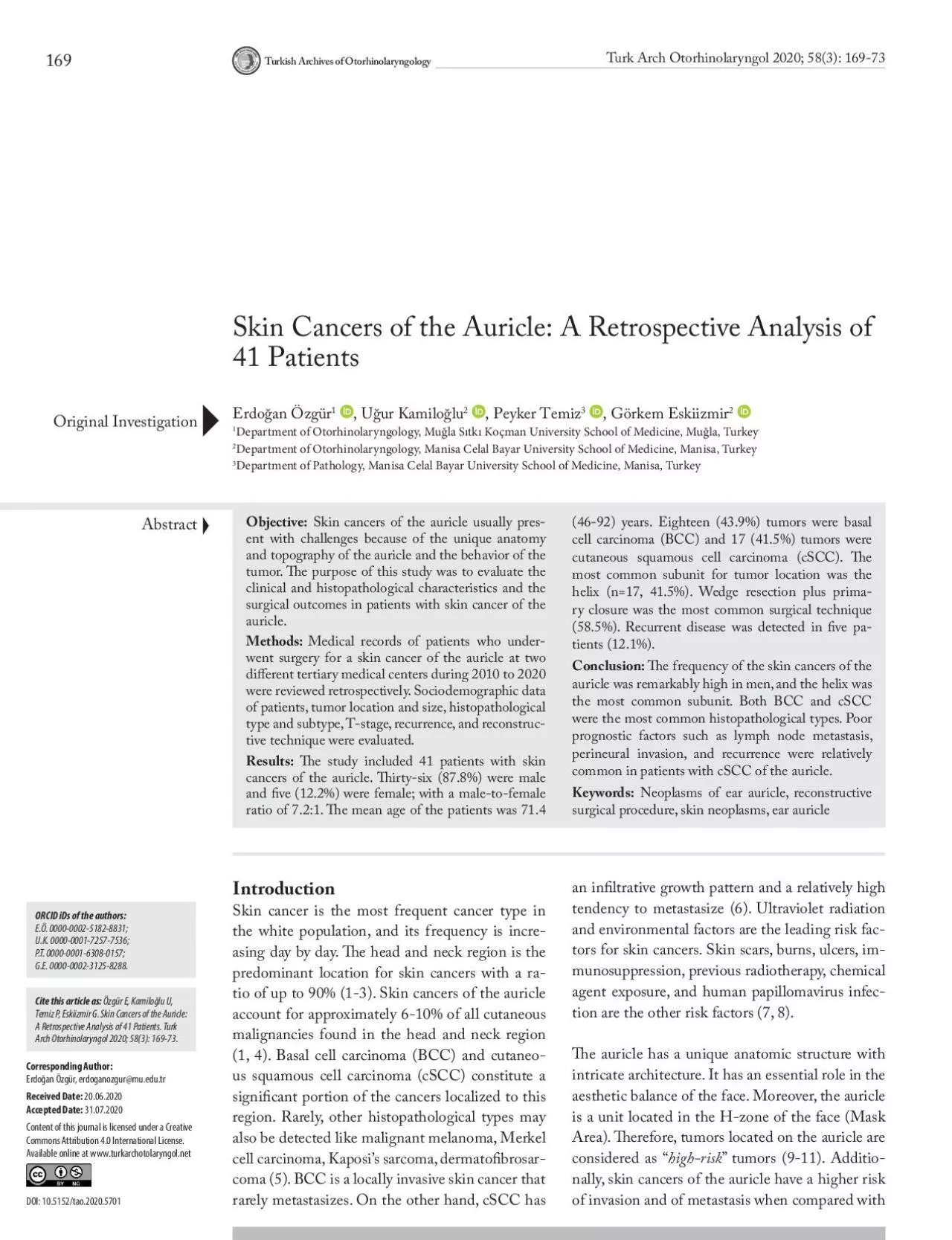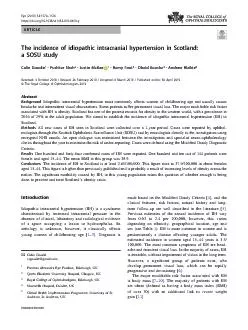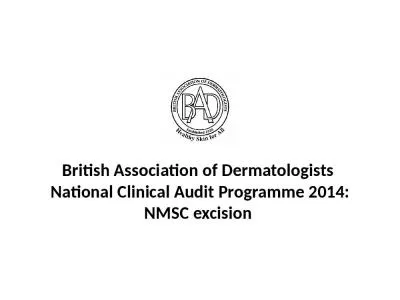PDF-Skin Cancers of the Auricle A Retrospective Analysis of
Author : deena | Published Date : 2022-08-16
41 Patients Erdo29an Özgür 1 U29ur Kamilo29lu 2 Peyker Temiz 3 Görkem Eskiizmir 2 1 Department of Otorhinolaryngology Mu31la S30tk30 Koçman University School
Presentation Embed Code
Download Presentation
Download Presentation The PPT/PDF document "Skin Cancers of the Auricle A Retrospect..." is the property of its rightful owner. Permission is granted to download and print the materials on this website for personal, non-commercial use only, and to display it on your personal computer provided you do not modify the materials and that you retain all copyright notices contained in the materials. By downloading content from our website, you accept the terms of this agreement.
Skin Cancers of the Auricle A Retrospective Analysis of: Transcript
Download Rules Of Document
"Skin Cancers of the Auricle A Retrospective Analysis of"The content belongs to its owner. You may download and print it for personal use, without modification, and keep all copyright notices. By downloading, you agree to these terms.
Related Documents














